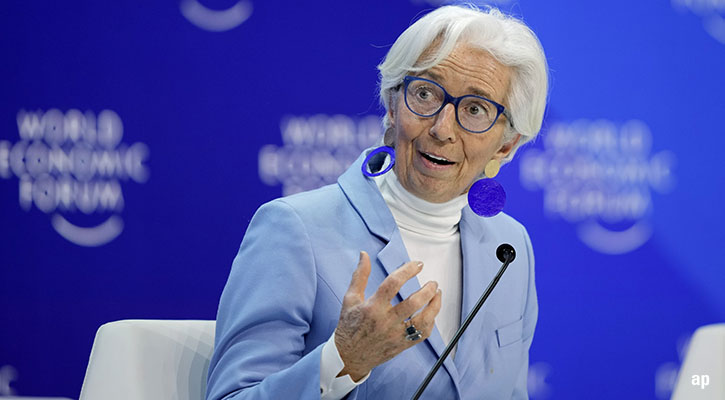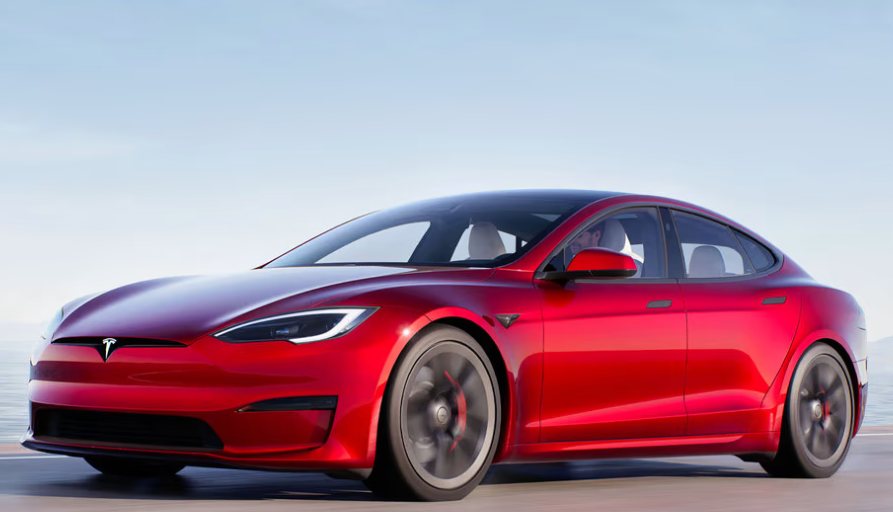Although the top three cruise operators-- Carnival CCL, Royal Caribbean Cruises RCL, and Norwegian Cruise Line NCLH--have more than 150 ships deployed, we still see opportunities for them to reach a wider set of consumers globally. In recent months, the major cruise lines have been increasingly vocal about widening their presence in the Asia Pacific region, particularly in China. If the expansion is carried out strategically, we believe this long-term opportunity has meaningful valuation implications, thanks to rising pricing power and earnings potential. However, we also view alternate emerging markets as an earnings catalyst to the cruise market over the longer term, especially countries in the Southern Hemisphere such as Australia and Brazil, which historically have been largely underrepresented source markets for the cruise industry.
The current timing couldn't be better for redeployment to lightly catered-to geographies (like China), or for sourcing more aggressively from previously underrepresented locations. First, the middle class continues to grow rapidly in countries such as Brazil and China, lending to more consumer discretionary spending. Second, advertising has historically been light in these areas, allowing the brands to cultivate a new, tailored message to reach potential cruisers. The strategic redeployment of capacity and realignment of source markets ultimately could lead to higher prices as brand awareness increases globally and the supply/demand paradigm shifts, helping improve profitability and valuation. We view this pricing power as indicative of strength in the cruise company brands, and the ability to harness increasing pricing power conveys strength in their economic moats.
We Expect Asia Pacific Itineraries to Gain Relevance
Modern-day cruising originated in the Caribbean, which continues to be a key region for cruise companies. Despite increases to wealth globally, cruise companies like Carnival, Royal Caribbean, and Norwegian have kept their ships positioned in the Caribbean because of the beautiful setting, cooperative weather, and the proximity of sourcing from one of its most important markets, the United States.
However, as the cruise brands (and products) have become more widely known internationally, and the middle class grows faster in emerging markets, we think the sourcing picture has the ability to change. We expect the U.S. and Europe to remain key customer markets, but we can't ignore the potential of countries like Brazil or China as the local marketing presence of cruise companies increases, driving brand awareness and helping attract new potential cruisers. We have historically seen healthy increases in brand awareness via traditional marketing and promotional efforts, which we expect also will be used in markets younger than the U.S.
We believe the impact of sourcing from emerging markets could be meaningful. Of the 21 million global cruise passengers in 2013, more than 80% came from the U.S./Canada and the United Kingdom/Europe. Just above 50% of passengers came from the U.S., which accounted for approximately 12 million travelers. With nearly 317 million Americans in the total population at the end of 2013, this signifies a 3.8% penetration rate of the domestic population. We estimate that the U.S. had a penetration rate of about 0.5% in the mid-1970s, when cruising was just catching on as the cadence of ship orders and deliveries was ticking up. If the cruise lines could double this reach to 1.0% penetration over the next decade in new markets (China's current penetration is less than 0.1%, while Brazil's is just under 0.5%), they could attract around 14 million cruisers from Brazil and China alone. Admittedly, this sort of penetration could be harder to reach in other emerging markets, like India, where customers would have to travel at some expense to embark and awareness is low, but it could be easier to accomplish in regions like Asia, where the cruise companies are actively building brand awareness, ramping up both the marketing and port infrastructure.
In the last publication of the Cruise Lines International Association's Cruise Market Profile (2011), the average income of domestic cruisers was $109,000 (median was $97,000), while the average age was 50 (median 48). According to recent U.S. Census data, 8.3 million out of 121 million households (7%) were around or above that aforementioned median number. If we extrapolate this percentage to China, the top 7% of Chinese households would represent 28 million households out of a total 400 million households (more than 1.3 billion people with 3.1 per household). We believe that hypothetically, the cruise industry will ultimately be able to reach only the top earners in the near term, perhaps up to the top 1% of households, reaching 4 million potential Chinese households, representing more than 12 million cruisers--which would be more than half of worldwide cruisers in 2013. We see brand equity increasing at the same time local consumers' ability to afford cruises is rising thanks to a broader marketing push by the cruise companies, providing a tailwind for awareness and strengthening these operators' narrow economic moats.
As a result, we believe opportunities remain to redeploy the fleet in international markets. Cruise companies have historically been strategic in repositioning assets to new and existing markets to obtain optimal yield potential. For instance, in response to the economic slowdown in Europe over the past few years, most cruise companies allocated more of their assets to the Caribbean from the European market, rather than to markets with naturally lower supply (and lower awareness) like South America or Asia Pacific. As the economic environment has improved in Europe, cruise companies have again increased their summer itineraries in the Mediterranean.
The deployment of assets in historically wealthy geographies like Europe, where the summer holiday period is rather lengthy, still provides competitive pricing opportunities as the economic environment continues to improve while costs remain controlled (thanks an increasingly efficient fleet and more strategic itineraries). Despite the increased importance other geographic regions have played in global GDP growth over the past decade, the global deployment of capacity has remained concentrated in the Caribbean and Europe.
The ability to redeploy assets to areas exhibiting local strength has been a special privilege cruise companies have used over the years. The biggest shortfall with the strategy is that most companies reallocate ships to and from certain regions in tandem, leading to the addition or subtraction of capacity on a magnified basis. The main concern here is that too much capacity could move to a region at once, threatening pricing potential as supply and demand risk a disconnect.
We think Norwegian is best positioned to benefit from slower industry capacity growth in the Caribbean region over the next few years as its presence remains firm, while its peers reposition their fleets to seek out other opportunities, particularly in China (Norwegian is the only cruise company not redeploying capacity to Asia Pacific in the near term). As long as the global economic environment doesn't weaken materially, we believe the overall industry should benefit from rising prices as capacity continues to shift into new regions, spreading supply across demand around the globe.
China's Cruise Passenger Potential Could Provide Significant Growth
Cruise companies have recently increased their presence in nascent markets, particularly in the Asia Pacific region as the middle class shows promise in its continued expansion. China is positioned to become the second-largest cruise market (behind the U.S.) by 2017, according to Carnival. Royal Caribbean has noted that China was already its third-largest market, behind the U.K. and U.S. Both firms are positioning increased capacity in the region to capitalize on the impending demand from the growing Chinese middle class.
We expect the repositioning of fleets to Asia Pacific will persist in the years ahead for two reasons. First, to continue to strengthen each separate cruise brand identity (and fortify the economic moat), awareness will need to be expanded in the region, and increased inventory should help accomplish this goal as travel agents have a wider selection to offer to customers. Second, to maintain the competitive cost structure and brand awareness, ships will be helped by residing locally for extended periods, which will reduce repositioning itineraries, build better local vendor relationships, and encourage travel agents to increase cruises as a travel option as inventory availability increases.
The Asia Cruise Association has estimated the total Asian market could grow from 1.3 million passengers in 2012 to nearly 4 million passengers in 2020, representing a more than 14% compound annual growth rate (Forbes), implying robust growth but lower than our 1% penetration outlook, which calls for 12 million people in China to be potential cruisers. The ACA also predicted that it would take 15 3,000-berth ships to cater to this demand year-round to carry the full number of potential cruisers. Currently, there is only about two thirds of that capacity by berths, with many sailing only portions of the calendar year (although cruising is increasingly becoming year-round in the region), indicating to us that there is still a long-term opportunity for the cruise business in the region.
Infrastructure and Distribution Could Be Headwinds to Acceptance
In our opinion, two headwinds could prevent a faster uptick in demand for cruise operators in China and other underdeveloped regions: lack of infrastructure and distribution. However, over the past three years significant capital has been dedicated to improve the infrastructure (port terminals) in Shanghai, Tianjin, and Xiamen in China. Another four terminals are already under construction with seven more in the pipeline (Forbes), which should accommodate a healthy level of demand. While rapid development could be a losing economic proposition for port owners if deployment and demand grows slower than the terminals are constructed, it could be a tailwind for cruise operators, allowing for lower contracted port costs and optimal scheduling for docking.
On the distribution side, expansion of brand awareness and product offerings will depend heavily on the depth and reach of each company's marketing capabilities. In the U.S., travel agents remains critical to the success of the cruise industry, as they book more than three fourths of the travel. We think travel agents will remain key players in planning for cruises for the foreseeable future, but with fewer ships deployed in newer regions, the choices can be easier for consumers to evaluate on their own. We don't believe, however, that direct booking will happen on a significant enough scale to alter the profitability potential of these businesses, and we expect the assistance of agents will be required as more choices become available to cruisers. Unlimited access to digital information about the cruising products and the individual brands will ultimately drive consumers to reach out to their travel agents to facilitate a booking. We believe the cruise operators will remain reliant on travel agents to convey the brand message widely and drive vacationers on board.
For each new cruiser in Asia Pacific markets, the cruise companies will be able to capture additional data points about local consumers and their preferences. Every new data point will create a more powerful algorithm for effective direct marketing and better tailored product offerings to local customers. As the industry builds on its 40 years of consumer-driven data, we believe this incremental data set into a new market can help cruise operators drive additional profitability through increased onboard spending, as appropriate local excursions and services are offered, and help build brand equity as the right products are likely to drive higher satisfaction rates and more repeat business.
While Asia should provide the most significant upside for cruise deployment, thanks to its robust demographic potential, we do view other key regions as value and brand driving, including Australia and South America, which still constitute a small portion of total global capacity deployment and sourcing for the industry.
Other Regions Could Provide Sourcing Opportunities
In our opinion, South America provides a better opportunity for sourcing rather than deployment. Only 3% of global cruise capacity is allocated to the region, so we view potential for additional deployment as positive, but economic uncertainty and political instability (which we think China also suffers from to some degree) could be headwinds that prevent cruise operators from expanding capacity there in any meaningful way, at least in the near term. The ability to work with government entities that could be fickle, changing tax structures or operating legislation unpredictably, could prevent cruise companies from pushing expansion in the region over the next few years. Furthermore, the less favorable weather and rough seas in locations further south, like in Buenos Aires or Valparaiso, could cause companies to operate during limited windows of time, despite possible interest in wildlife/environment year-round (a very niche target audience) and the ability to offer adventurous excursions for those seeking additional on land experiences.
We believe a significant number of travelers for itineraries in the region are still sourced from outside South America, rather than from within the region. Only 3% of global cruisers are sourced from the region in total, according to CLIA, and we assume some of those take cruises elsewhere. However, we see various levels of sourcing potential by country to expand the cruise business internationally, particularly as a greater proportion of the population moves into the middle class, especially in countries like Mexico and Brazil. The region stands to benefit from expected population growth and rising per capita incomes, increasing the potential for discretionary purchases for some households.
As with China, a possible concern in attracting these consumers could be the finite marketing resources in the region, with fewer travel agents representing the businesses than optimal, leading to less brand awareness than we think the cruise operators would like to have. Although representation is likely to grow as demand increases, it might take some time to materially increase brand awareness and sourcing from the region.
Australian Cruise Awareness Already Decent
Australia is well served by the major cruise companies when we consider number of ships/berths deployed and percentage of the population that has cruised. However, we think cruise companies could capture better pricing over time with improving economic stability and growing brand awareness in the region, which recently seems to have reached critical mass. In July, Travel Weekly quoted CLIA's 2013 Australasia report, which said more than 880,000 Australians took a cruise, representing about 3.6% of the total country population (in line with U.S. cruisers as a percentage of the population, but off a smaller population base). This traveler base rose 20% in 2013 and has quintupled since only 2003, indicating to us that the adoption of cruising as a vacation experience has been well underway over the past decade.
In our opinion, the ability to offer various itineraries across the South Pacific, New Zealand, and coastal areas resonates well with adventurous consumers and helps drive repeat business, as customers may revisit previously traveled brands to acquire different holiday experiences, helping build brand loyalty. The proximity of port options to the general population helps convey the value proposition of cruising in Australia and drives brand awareness; few consumers have to take time or spend money to travel to the point of embarkation, with 8.3 million Australians (out of 23 million total) already living in the major port cities of Sydney, Brisbane, and Perth.
We think Australia could become an increasingly important source market to access cruisers for outside the region, particularly as the cruise companies operate more capacity to the general region. Since cruise awareness is already fairly high among travelers thanks to operators' longer-term presence and visibility in the region, the value proposition of visiting Europe or the Caribbean should be easy to understand for Australians and easy to sell for brands with equity among consumers.
Time Horizon Dictates Recommendations
The performance of the cruise operators has diverged over the past few years. While all three of the publicly listed operators have been affected by global economic trends, company-specific issues have driven either outperformance or underperformance of these firms' businesses and stocks during specific periods. Depending on investment time horizons, we believe there is merit to invest in each of the three cruise operators we cover, as we expect macroeconomic and demographic factors to help drive growth broadly across the sector, and shares of all three trade lower than our fair value estimates.
For shorter-term investors, we think Carnival provides an interesting opportunity, as yields improve from depressed levels as the brand recovers from mishaps in 2012 and 2013. For medium-term investors, we see Royal Caribbean's Double-Double program setting the business on a rapid earnings per share growth trajectory, which is expected to persist through 2017. For longer-term investors, Norwegian's fleet deliveries over the next five years offer capacity growth unparalleled by its peers, which should carry through 2019 (the year through which we have firm ship orders). Additionally, expansion into the upscale, premium market segment offers a wider cast of consumers for Norwegian than in the past. We do believe each operator stands to benefit from the increased global awareness of the cruise product, the experience it offers, and the value proposition that it provides.
Norwegian Best Positioned to Capitalize on Industry Evolution
With its smaller fleet than either Royal or Carnival, it has probably been more difficult for Norwegian to reallocate ships to and capitalize on newer geographic growth regions and opportunities, as the marketing spending for one or two ships in a new territory could be costly and brand recognition could be poor, driving a weak return on investment. Management at Norwegian has been disciplined, demanding that all of its ships perform well. With only 13 ships currently deployed (growing to 21 ships after the Prestige acquisition closes), one significant underperformer could drag down the entire financial results, and brand perception, of the company.
The company has focused on cruising in the Caribbean, where its brand strength is the strongest and it has healthy brand awareness to help capture solid yields. In 2014, Norwegian had more capacity in the Caribbean region where the brand strength is growing (and less in Europe over the full year) than its closest competitors. The remainder of Norwegian's deployment is split among Bermuda, Alaska, Hawaii, and other, with none of the aforementioned segments representing more than 9% in 2014.
Norwegian's stout focus on its regional strength and sourcing from the U.S., where the brand is more widely recognized, has provided some of the strongest capacity-adjusted yield performance (net yield growth) in the industry. While Norwegian is missing out on the first-mover advantage in new regions, particularly Asia Pacific, we think it will capitalize on early lessons learned about local demand from its competitors and from previous itineraries operated by Prestige in the region. This should ultimately lead to better brand perception in new geographies as Norwegian enters after peers with a perfectly tailored product to local demand. Norwegian's partnership with Genting gives additional insight into the Asian cruising market (although Genting's target market and product offerings are very different). This could help ensure the Norwegian-branded ships are positioned properly as they enter new local markets, which should help the business capture optimal pricing.
In our opinion, the smaller size of Norwegian's fleet provides a near-term tailwind for the business; newer berths coming on line tend to generate a premium yield, and each new ship provides a higher proportion of new berths to the total business than a new ship would for Royal or Carnival. In our opinion, this should persist over the next decade, until Norwegian's new ships begin to represent a smaller percentage of total capacity. The growth trajectory for Norwegian's capacity still remains well above its peers' over the next five years.
Royal Caribbean Has Strongest Current Global Brand Presence
Royal's brand seems to have been spared from the fallout over rival Carnival's mishaps of 2012-13, as yields are projected to surpass peak capacity adjusted yields over the next two years and did not decline after either the Costa Concordia (2012) or Carnival Triumph (2013) incidents. Positioning its newest ship in the Asian market next spring speaks volumes to Royal's dedication to the region and builds brand awareness and goodwill among cruisers in the up-and-coming region. Putting the industry's newest hardware in China should ultimately give Royal a first-mover advantage, despite its and Carnival's presence (on a very small scale) in previous years.
Additionally, the recently announced Double-Double program, which aims to double returns on invested capital and earnings per share by 2017, should keep Royal's capital allocation disciplined and provide a catalyst for the stock over the medium term, if it appears the business remains on track to achieve these goals.
The continued focus on the premium and contemporary segments, which generally cater to a more affluent demographic than some other brands that offer shorter, less expensive options, has helped Royal obtain healthy capacity-adjusted yield performance. Without a brand that focuses on low-middle-income demographics (like Carnival's namesake brand, in which it corners that demographic), Royal was slightly more insulated from the last economic downturn than Carnival, in our view, and should be so again if economic conditions weakened. Higher-income consumers are generally less affected by economic instability, thanks to higher net worth and savings, and thus less likely to be forced to forgo holiday plans.
Carnival Has Best Opportunity to Improve Brand Perception
Carnival remains the industry behemoth, with 100 ships on the seas, and we think it still has topnotch access to vendors, suppliers, and travel agents. With product offerings that span demographic cohorts and brands that are tailored to local markets, it would be hard for competitors to quickly close the gap in scale or global awareness, in our opinion.
That global brand awareness has two sides, though, and Carnival fell from grace in 2012 and 2013 as the media grabbed hold of mishaps at two of the company's brands--the Costa Concordia disaster and Carnival Triumph incident. The company hired outside strategists that indicated brand recovery would take three years after the Triumph's stranding in early 2013 (and a few follow-on smaller troubles), which would place the full recovery of Costa squarely in the first half of 2015 and Carnival at mid-2016.
In our opinion, Carnival has the best opportunity to turn its brand around and, in return, improve its profitability as better brand perception drives higher prices. The company's capacity-adjusted yields, which fell precipitously after the 2008 recession, were recovering nicely, clocking decent gains in 2010 and 2011. But that improvement was halted in response to the previously mentioned incidents, and the company should finally be able to generate capacity-adjusted yields in 2014 at 2009 levels again (at the trough of the recession). We think it will take until 2019 to get back to peak yields, which were $195 per diem back in 2008.
Carnival still has shown discipline with its balance sheet, with the lowest leverage levels in the industry. However, its ROICs have remained depressed since the recession, falling below our 10% weighted average cost of capital in 2009, and have yet to recover. We believe ROICs should return to double-digit levels around 2019. While the global economic environment continues to improve, which should help pricing, we still think exposure to the lower-income consumer demographic through the Carnival brand (which represents 30% of Carnival's total capacity) could weigh on total returns and take longer to resume robust growth. Low-income consumers were disproportionately affected by the most recent recession, and they could be more hesitant to part with the discretionary dollars they earn in future periods. This doesn't necessarily mean they don't want to cruise, but could mean they spend more cautiously on board.


















